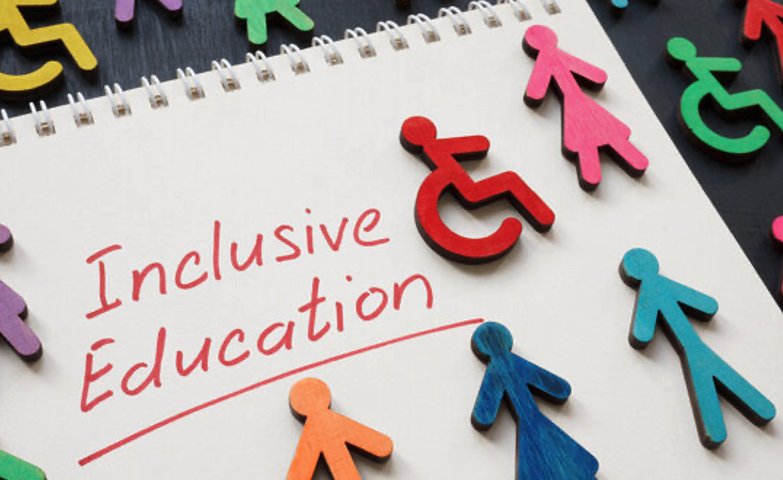Fostering Inclusive Education: How Schools Can Support Students with Special Needs in the General Education Classroom

Fostering Inclusive Learning Environments: A Comprehensive Guide for Supporting Adult Learners with Autism in the Community
Fostering Inclusive Education: How Schools Can Support Students with Special Needs in the General Education Classroom
Inclusive education is a critical aspect of a diverse and fair educational system. It ensures that students with special needs, including those with physical, cognitive, or emotional disabilities, have access to the same educational opportunities as their peers. In recent years, there has been a significant push for more inclusive practices in schools. Research has consistently shown that inclusive education benefits all students, including those with and without disabilities. Inclusive education promotes diversity, fosters empathy and understanding, and prepares students for life in a diverse society. It also helps to break down barriers and reduce stigma associated with disabilities. However, there is still work to be done to ensure that all students, regardless of their abilities, receive the support they need to succeed. This blog will explore some effective strategies that schools can use to help students with special needs in the general education classroom receive a diverse educational experience.
Challenges and Barriers to Inclusive Education:
Despite the numerous benefits of inclusive education, there are still many challenges and barriers that schools face in implementing inclusive practices. One of the biggest challenges is the lack of training and support for teachers. Many teachers do not have the necessary training or resources to effectively support students with special needs in the general education classroom. Another challenge is the lack of collaboration and communication between general education and special education teachers. Effective collaboration and communication are essential for supporting students with special needs in the general education classroom. Other challenges include negative attitudes and beliefs about students with disabilities, lack of funding and resources, and lack of support from parents and the community.
Benefits of Inclusive Education:
Inclusive education benefits all students, including those with and without disabilities. Research has consistently shown that students with special needs who are included in general education classrooms have higher academic achievement, better social and emotional development, and improved self-esteem. Inclusive education also benefits students without disabilities by promoting empathy and understanding, improving social skills, and preparing them for life in a diverse society. Inclusive education also benefits schools by promoting diversity, fostering empathy, and understanding, and reducing stigma associated with disabilities.
Promoting Inclusive Practices:
Creating an inclusive environment starts with the school’s culture and policies. Administrators and staff should prioritize inclusivity, fostering an atmosphere of acceptance and support for all students. This can be achieved through professional development, where teachers learn about different special needs and effective teaching strategies. Training should also include guidance on how to create a positive classroom environment that encourages collaboration and respect among students of all abilities.
Understanding Special Needs:
Before diving into strategies, it’s essential to understand the diverse range of special needs that students may have. These needs can include physical disabilities, such as mobility impairments or visual or hearing impairments; cognitive disabilities, such as intellectual disabilities or learning disabilities; and emotional or behavioral disabilities, such as anxiety disorders or attention-deficit/hyperactivity disorder (ADHD). Each student’s needs are unique, and it’s crucial to approach their education with an individualized and holistic mindset.
Collaboration between General Education and Special Education Teachers:
Effective collaboration between general and special education teachers is essential for supporting students with special needs. General education teachers often have larger class sizes and may not have specific training in special education. Special education teachers can provide valuable insights, resources, and strategies to help meet the diverse needs of students. Collaboration can include co-teaching, where both teachers work together to plan and deliver instruction, or consultation, where the special education teacher provides guidance and support to the general education teacher.
Differentiated Instruction:
Differentiated instruction is a teaching approach that recognizes and responds to the diverse learning needs of students. This can involve modifying the curriculum, adjusting the pace of instruction, or providing additional support or resources. By tailoring instruction to meet each student’s needs, teachers can create a more inclusive and effective learning environment. Differentiated instruction can also help students develop essential skills, such as self-advocacy and problem-solving, which are crucial for success in and out of the classroom.
The Use of Assistive Technology:
Assistive technology can be a powerful tool for students with special needs. This can include devices or software that help students with physical disabilities to communicate, or tools that provide additional support for students with learning disabilities. Schools should ensure that teachers are trained in the use of assistive technology and have access to the necessary resources. Additionally, schools should provide students with the appropriate technology and support to help them succeed in the classroom.
Creating a Supportive Classroom Environment:
A supportive classroom environment is essential for all students, but particularly for those with special needs. This can involve establishing clear expectations, providing positive reinforcement, and creating a sense of belonging. Teachers can also promote peer support and collaboration, encouraging students to work together and learn from one another. Creating a supportive classroom environment can help students feel more comfortable and confident in their abilities, which can lead to improved academic and social outcomes. Too many times students have said that they did not feel their teachers even liked them. We need to change this culture and allow students to feel accepted, encouraged, and cared for.
Providing Individualized Support:
Every student with special needs is unique, and their education should be tailored to their specific needs. Schools should provide individualized support, such as one-on-one tutoring, counseling, or therapy services. This can help students develop essential skills and overcome challenges that may be hindering their learning. Individualized support can also help students build self-confidence and independence, which are crucial for success in school and beyond. If individualized support is a struggle for the school to provide, peer mentoring/modeling is another great research-based strategy that could be included to impact the learning of students with special needs. Additionally, pairing older students with younger students to help mentor not only helps the learner who is struggling, but provides a boost in self-esteem and communication for the older students working with these learners.
Promoting Social Inclusion:
Inclusive education is not just about academics; it’s also about fostering social inclusion. Schools should provide opportunities for students with special needs to participate in extracurricular activities, clubs, and events. This can help students develop social skills, build friendships, and feel more connected to their peers. Additionally, schools should promote a culture of acceptance and respect for all students, regardless of their abilities.
Regular Assessment and Feedback:
Regular assessment and feedback are essential for monitoring student progress and making necessary adjustments. Schools should use a variety of assessment tools, such as standardized tests, observations, and informal assessments. This can help teachers identify areas of strength and areas for improvement, allowing them to provide targeted support. Regular assessment and feedback can also help students set goals and track their progress, which can increase motivation and engagement in the classroom.
Inclusive education is a journey, and schools must continually strive to improve their practices to better support students with special needs. By promoting inclusivity, collaborating between general and special education teachers, providing differentiated instruction, using assistive technology, creating a supportive classroom environment, providing individualized support, promoting social inclusion, and using regular assessment and feedback, schools can create a more inclusive and effective learning environment for all students.
Related posts






